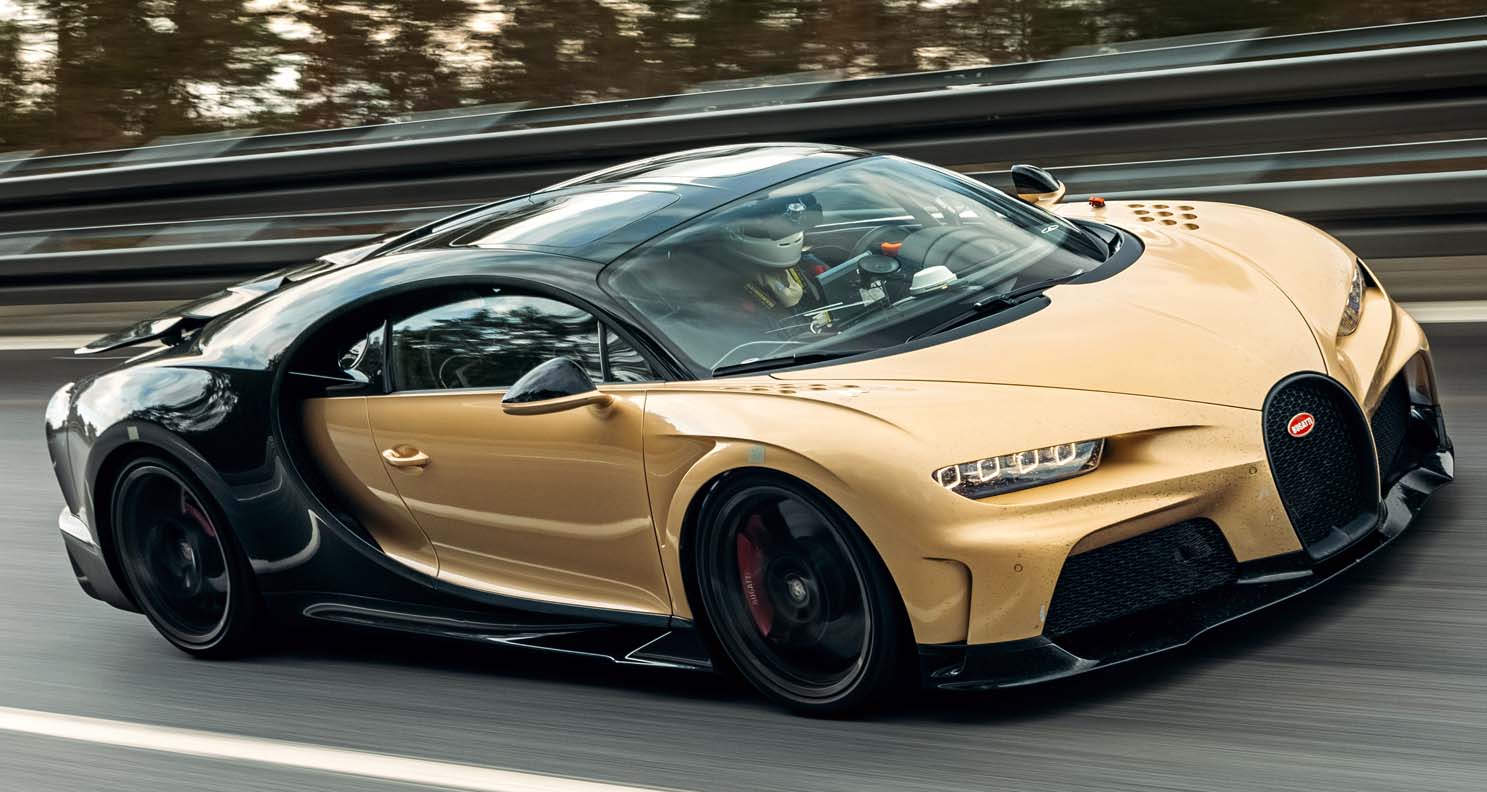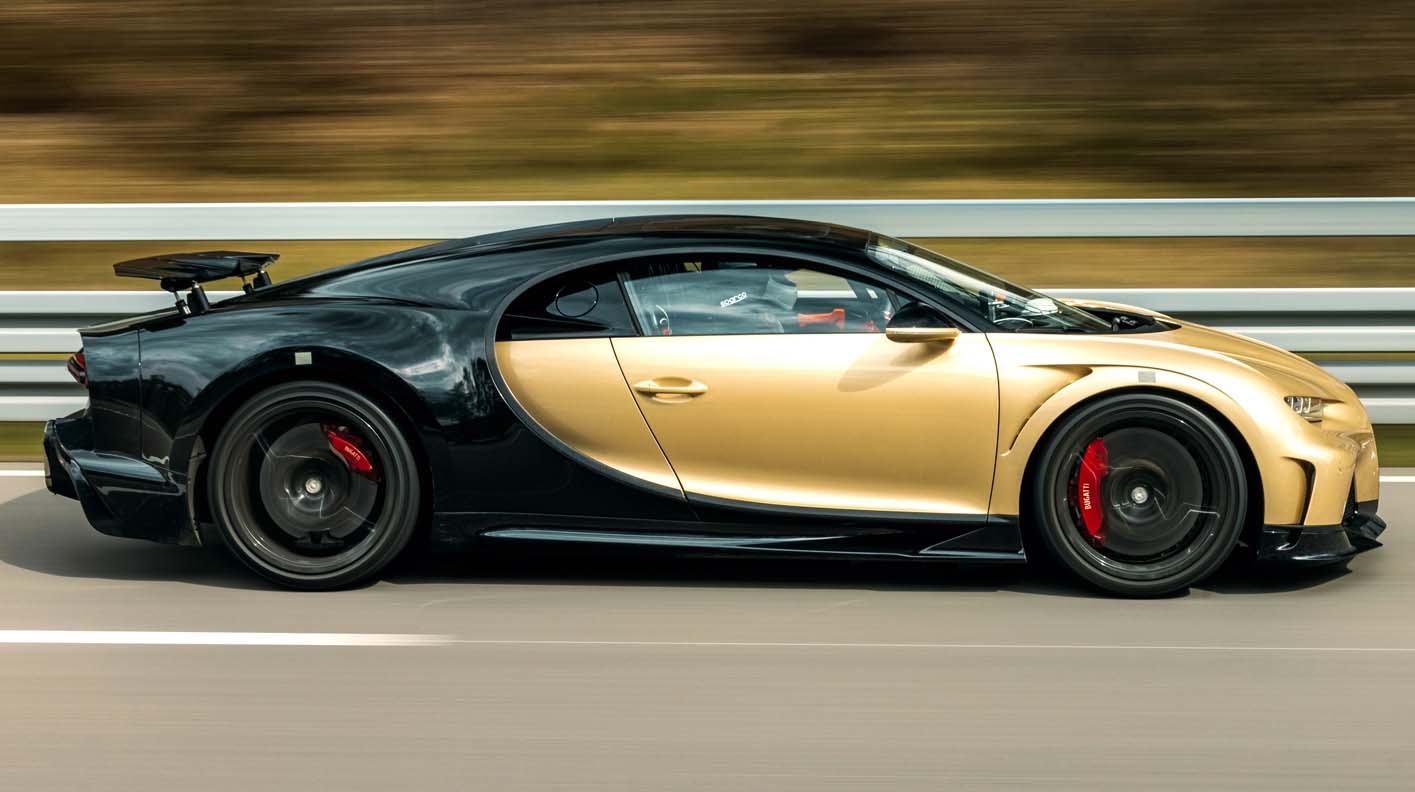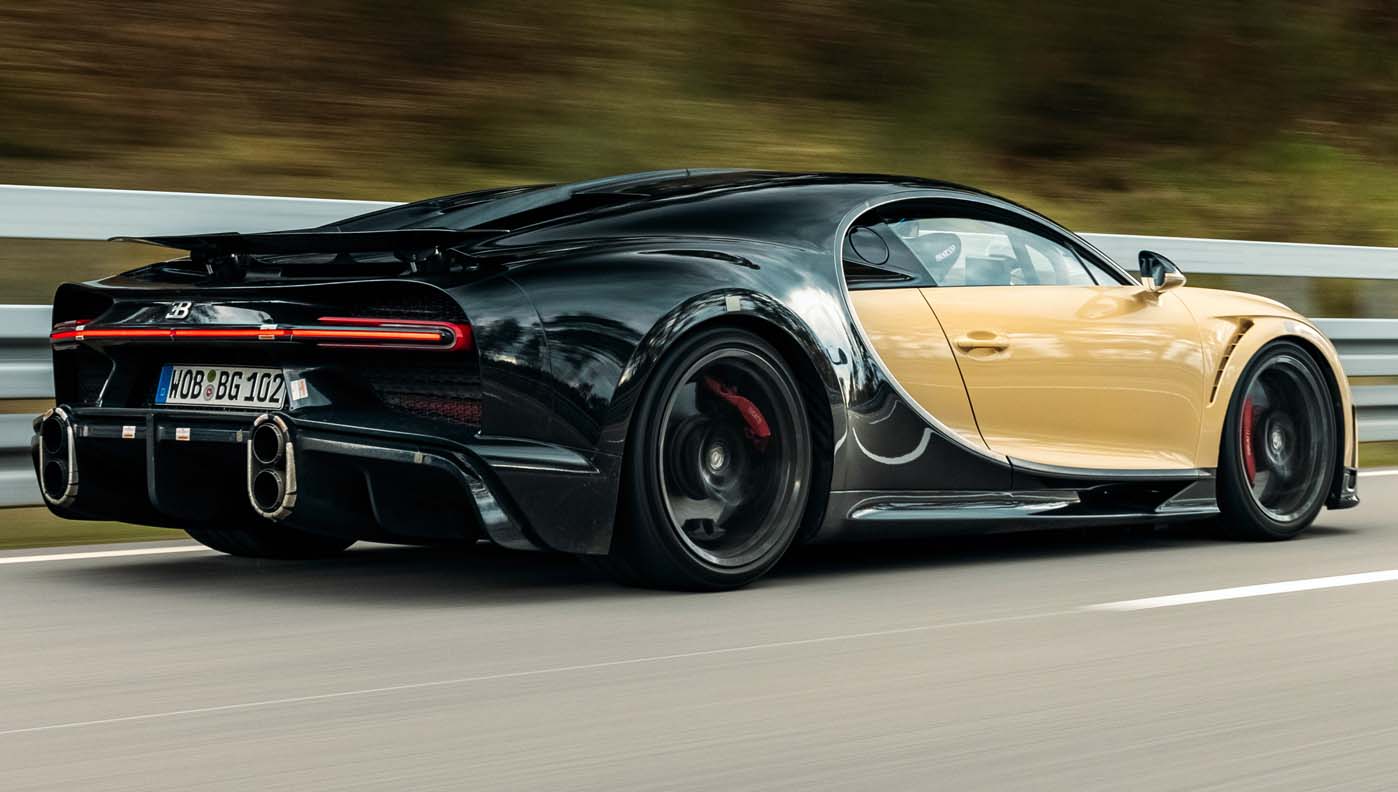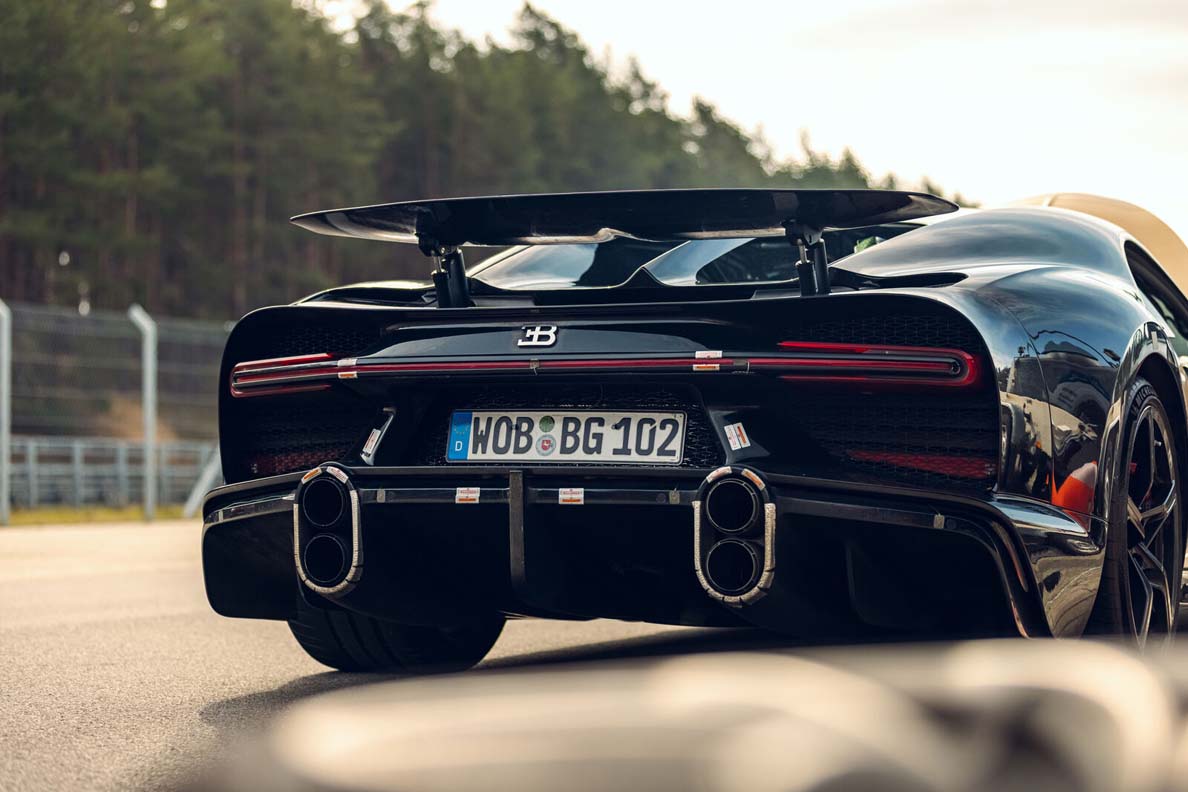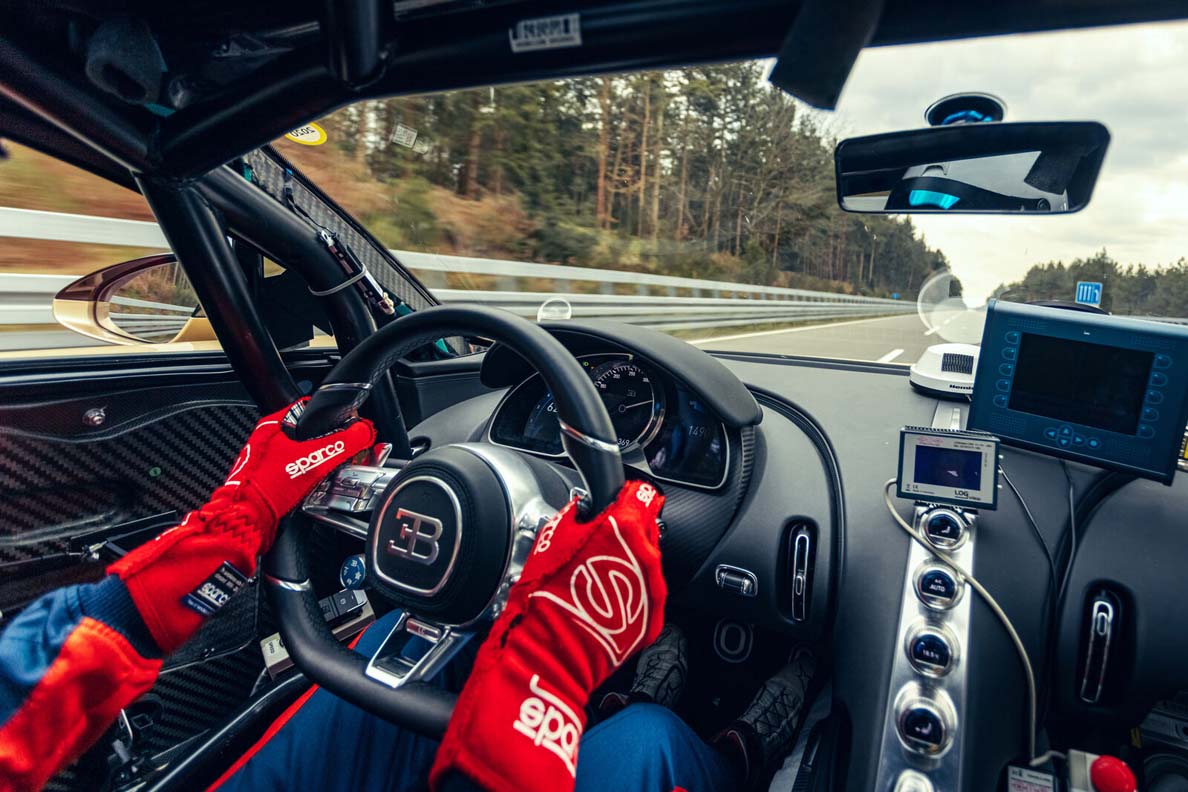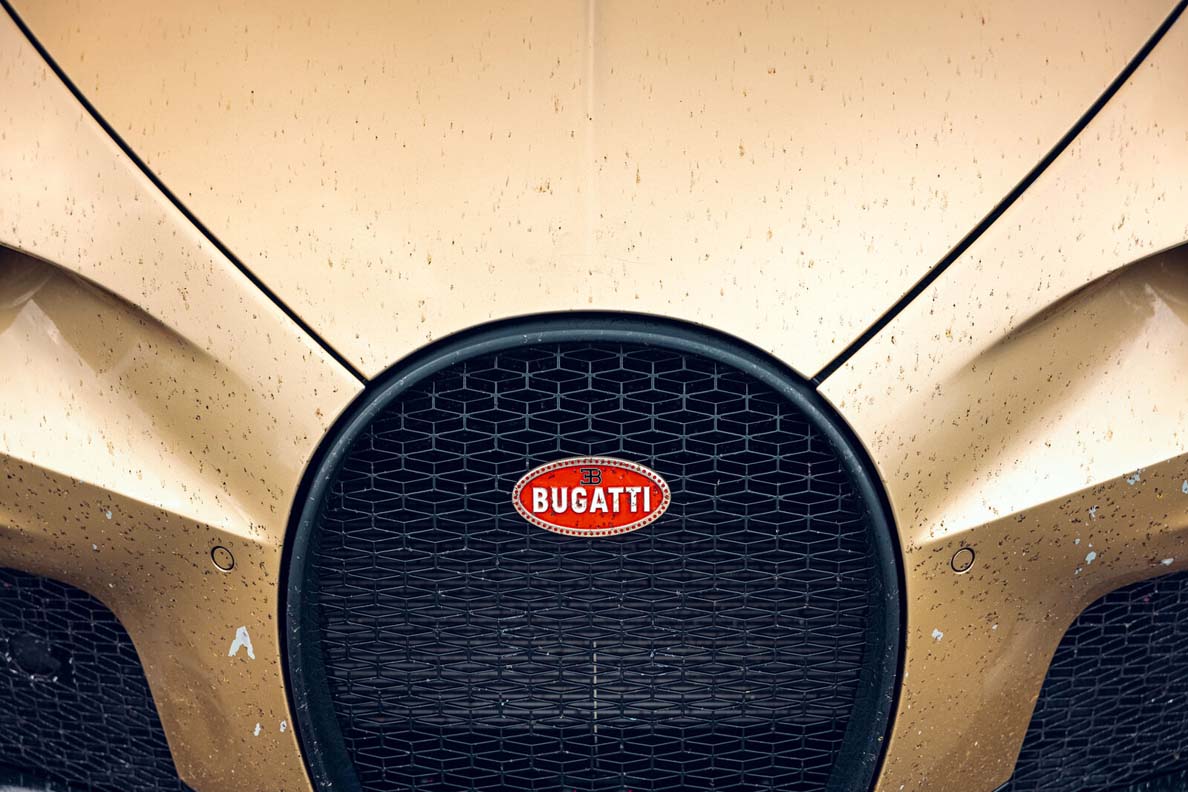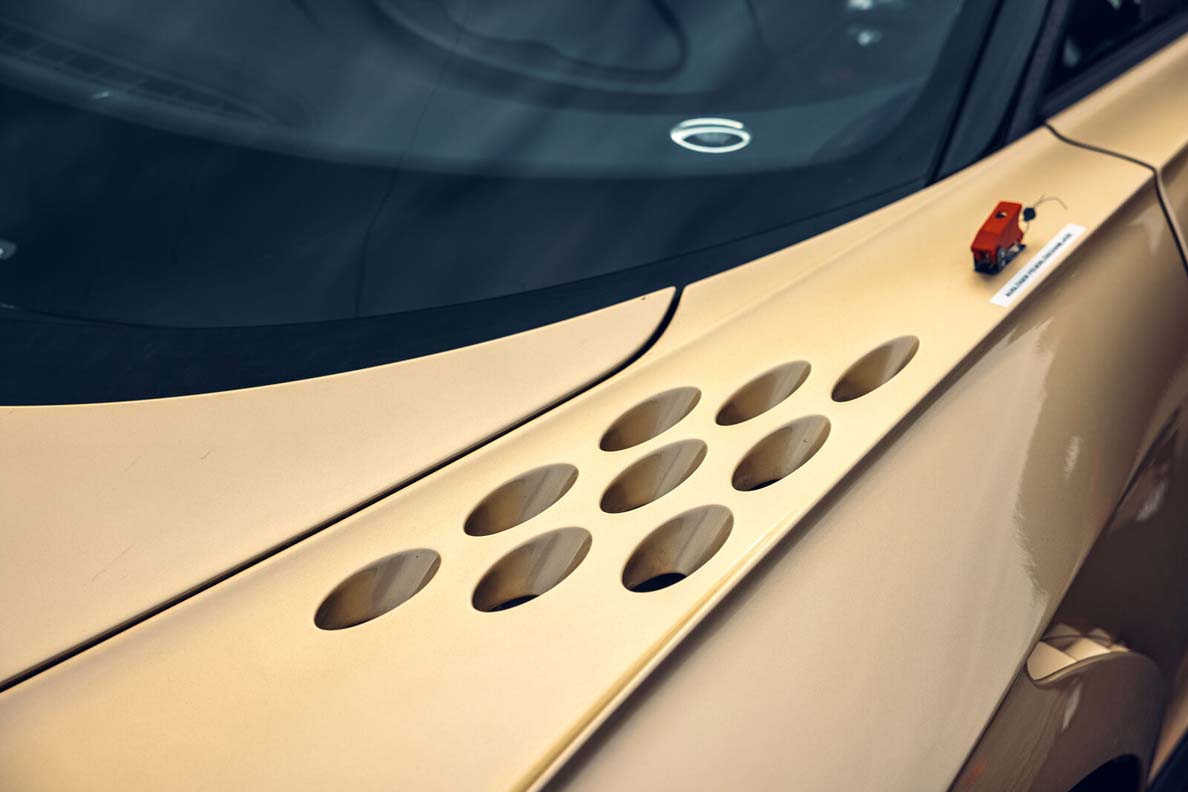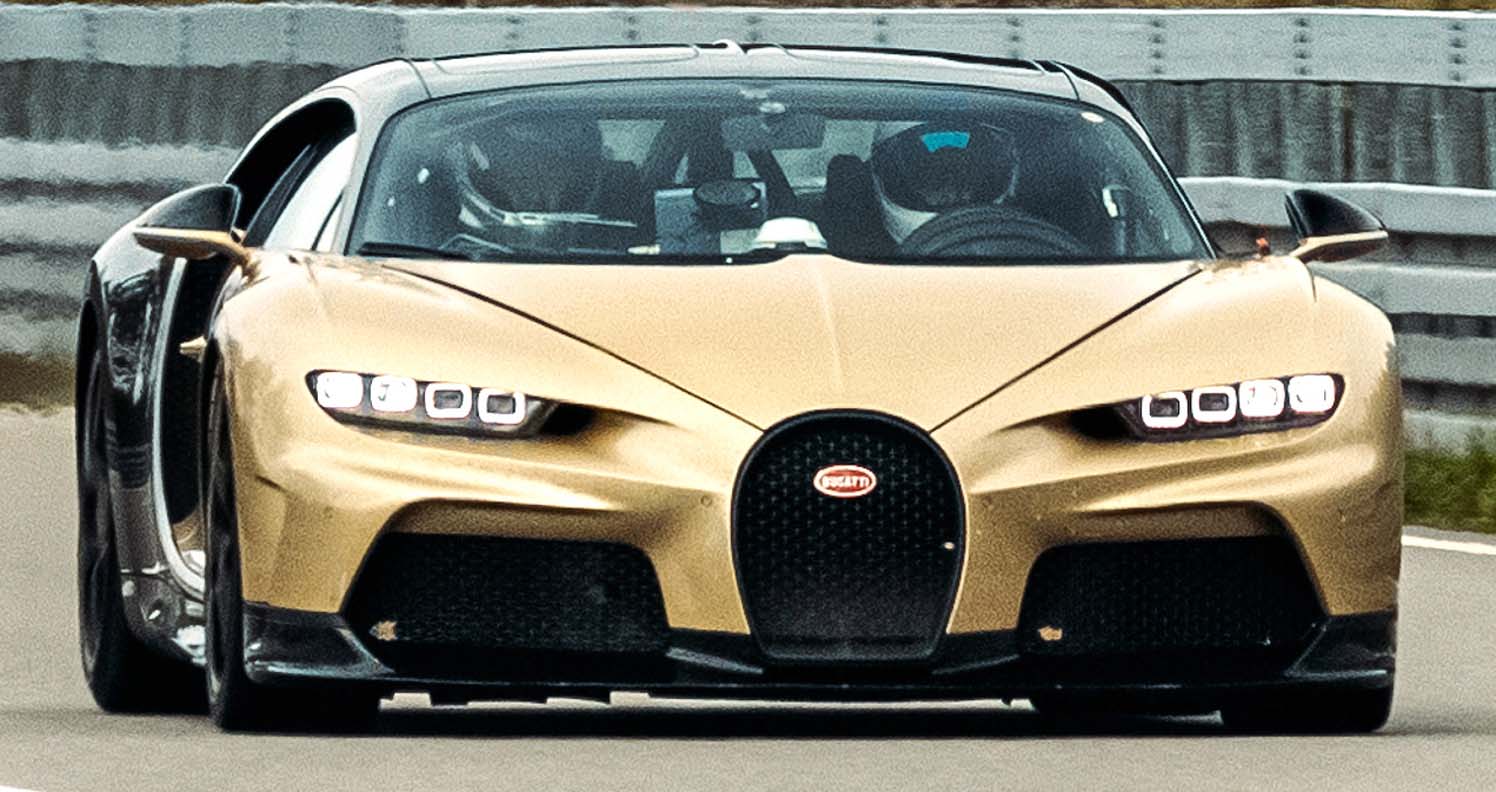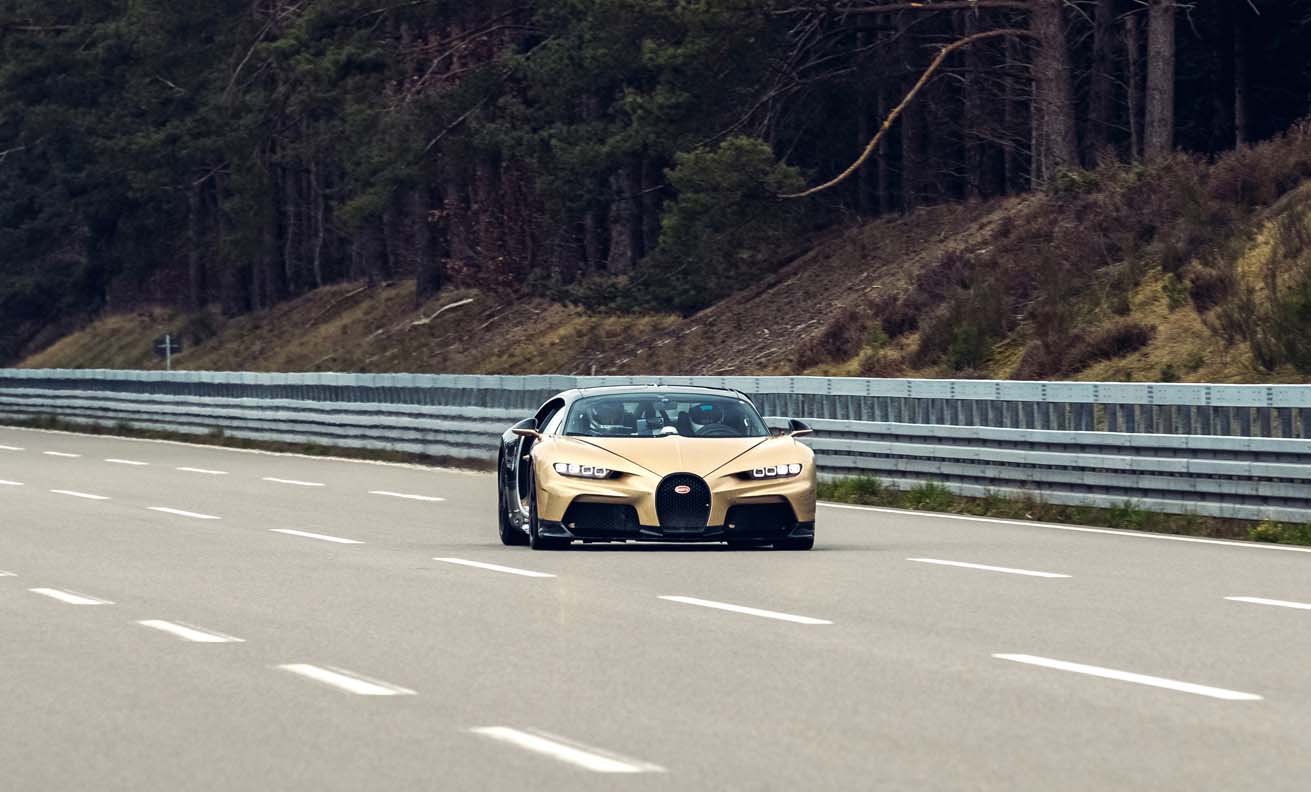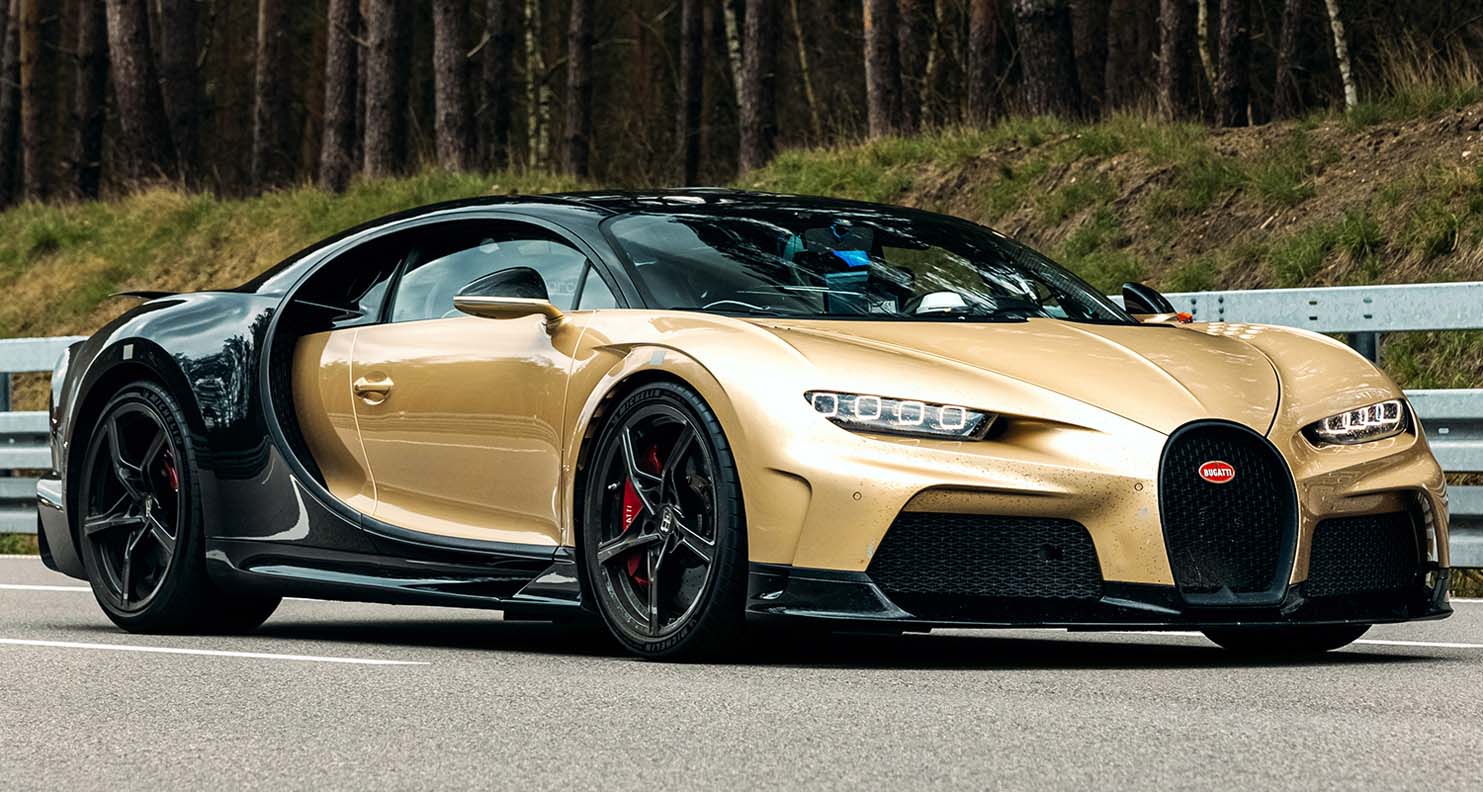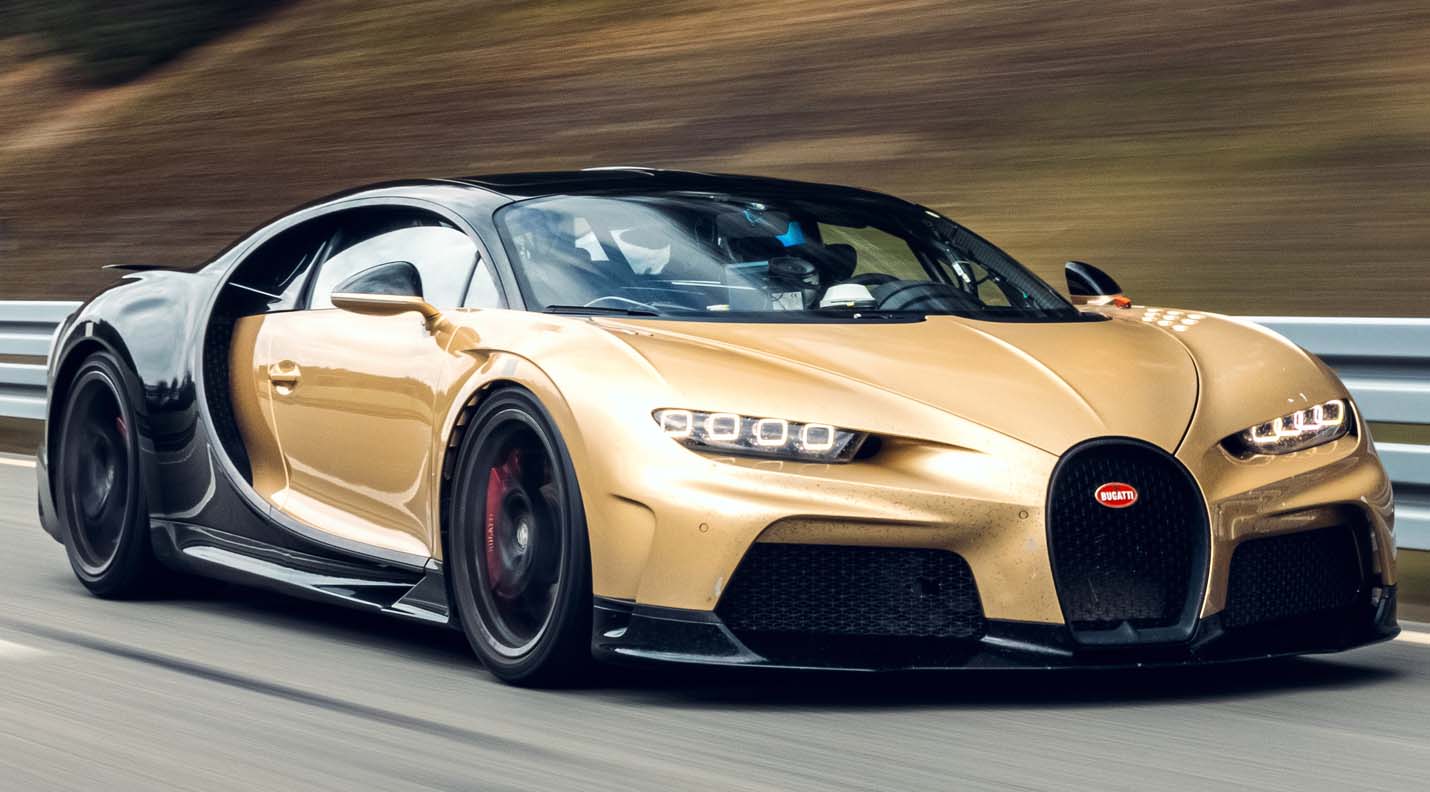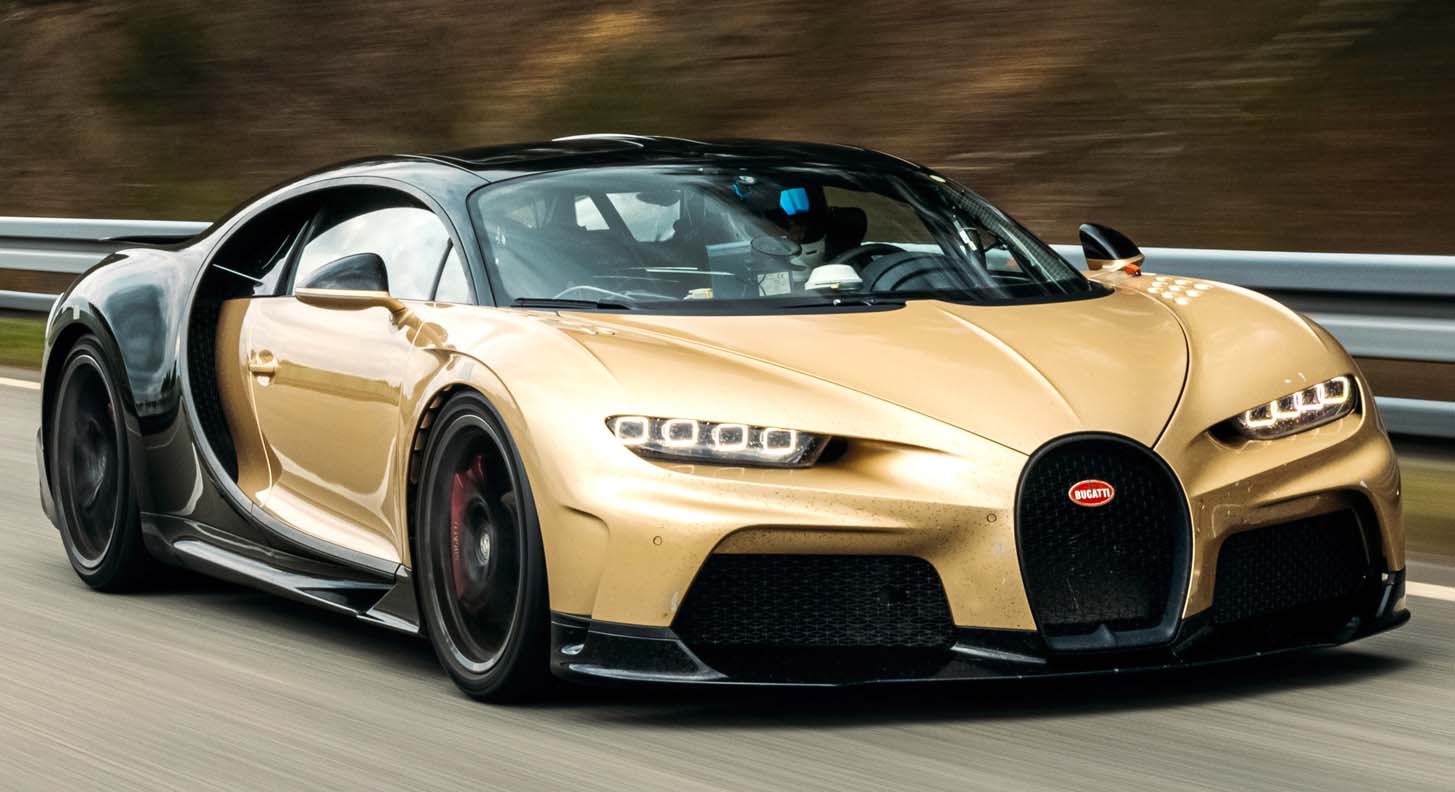
There’s a low rumbling in the air that grows to into an inescapable thundering sound. A moment later, the ground begins to vibrate and the Bugatti Chiron Super Sport1 whizzes past and disappears into the horizon. The new hyper sports car from France is being tested at up to 440 km/h on the high-speed track. The cockpit is occupied by experienced development engineers who are giving the Chiron Super Sport the finishing touches with tuning drives, designed to achieve the unique combination of top speed, luxury, and comfort beyond the 400 km/h mark, too.
During high-speed test-drives conducted over several days, the engineers fine-tune the mechanics, damping, and aerodynamics before the first models of the new Chiron Super Sport being produced by hand in Molsheim, will be delivered from end of August 2021 onwards.
“Following successful road tests at up to 380 km/h, we are now refining the handling of the vehicle at up to 440 km/h to allow the Chiron Super Sport to perform with uncompromising safety, even at this incredible top speed, and give the driver a good, and above all, safe feeling at extremely high speeds,” explains Jachin Schwalbe, Head of Chassis Development at Bugatti.
This comes down to multiple technical modifications and optimizations. Various parameters can be modified and compared based on variable settings for the rear wing angle, vehicle height, damping, and electrically assisted steering. This is done lap after lap, all in top speed mode.
Up to six engineers then discuss the perfect setup. “Our engineers are from a wide variety of specialist backgrounds, enabling them to comprehensively verify our assessments, ensuring the best possible result and therefore maximum performance for the future owners while ensuring there is maximum testing safety,” says Jachin Schwalbe. This is exclusive work – at 440 km/h, the Chiron Super Sport is the world’s fastest production sports car.
Some 100 additional sensors measure temperature and pressure
Michael Bode, part of the Bugatti team responsible for overall vehicle testing, attends to the measurement technology in order that objective data can be evaluated in addition to subjective impressions. Approximately 100 additional sensors record various data during the test-drives, such as the temperature and pressure.
“With the incredible power output and high speeds, the uplift and the thermodynamics change depending on the different pressure levels. We therefore monitor all the parts at top speed and full load, and then optimize them if necessary. We owe this level of work to the customers who buy this extraordinary and exclusive vehicle,” explains Michael Bode.
The Chiron Super Sport differs from the Chiron2 and the Chiron Pur Sport3 among other things due to its extended and aerodynamically optimized bodywork, which has been designed for extreme high speeds beyond the 420 km/h mark. The extended rear holds the laminar flow to the automobile for longer, resulting in a significantly smaller trailing surface. This reduces drag and improves the aerodynamics – complex work at top speeds of over 400 km/h.
The idea of a long tail emerged in summer 2019 when the Bugatti Chiron Super Sport 300+4 became the first production vehicle to breach the threshold of 300 miles an hour – a speed record for production vehicles that it still holds to this day, having hit exactly 304.773 mph (490.484 km/h) to make it the fastest production sports car around. The series production run of the Super Sport 300+, limited to 30 units, was immediately sold out.
Greater output and a longer seventh gear ratio
In addition to newly designed aerodynamics, Bugatti has modified the propulsion. Ensuring that the Chiron Super Sport accelerates strongly even in excess of 400 km/h is the responsibility, among others, of Marco Schulte. As an engine application developer within Bugatti’s Development department, he tunes the output of the four turbochargers precisely to the load.
In the Chiron Super Sport, the 8.0-liter W16 engine delivers 1,176 kW/1,600 PS – exactly 100 PS more than in the Chiron. With the improved performance, induced among other things by larger turbochargers with more efficient compressor wheels, the seven-gear dual-clutch transmission at full load and full speed now does not transition from sixth to seventh gear until 403 km/h. In addition, the seventh gear’s ratio was made 3.6 percent longer.
“It’s crucial that the driver doesn’t notice the interruption in traction when changing gears at 7,100 rpm. We therefore set the boost pressure regulation more finely in the last three gears,” explains Marco Schulte. As a result, the boost pressure dips only minimally during a gear change in order to immediately offer the full boost pressure of 2.8 bar again. The Chiron Super Sport accelerates from 0 to 100 km/h in 2.4 seconds and to 200 km/h in 5.8 seconds, making it 0.3 seconds faster than a Chiron.
The difference is even more evident when accelerating from 0 to 300 km/h – this takes 12.1 rather than 13.1 seconds. The Chiron Super Sport accelerates from 0 to 400 km/h in 28.6 seconds, making it four seconds faster than the Chiron. Above 420 km/h, the Chiron Super Sport is in a league of its own – the Chiron gently curtails the speed when it hits 420 km/h.
The Chiron Super Sport starts at 3.2 million euros (net). It counts within the production run of 500 units of the Bugatti Chiron. A large variety of options for personal customization is available.
